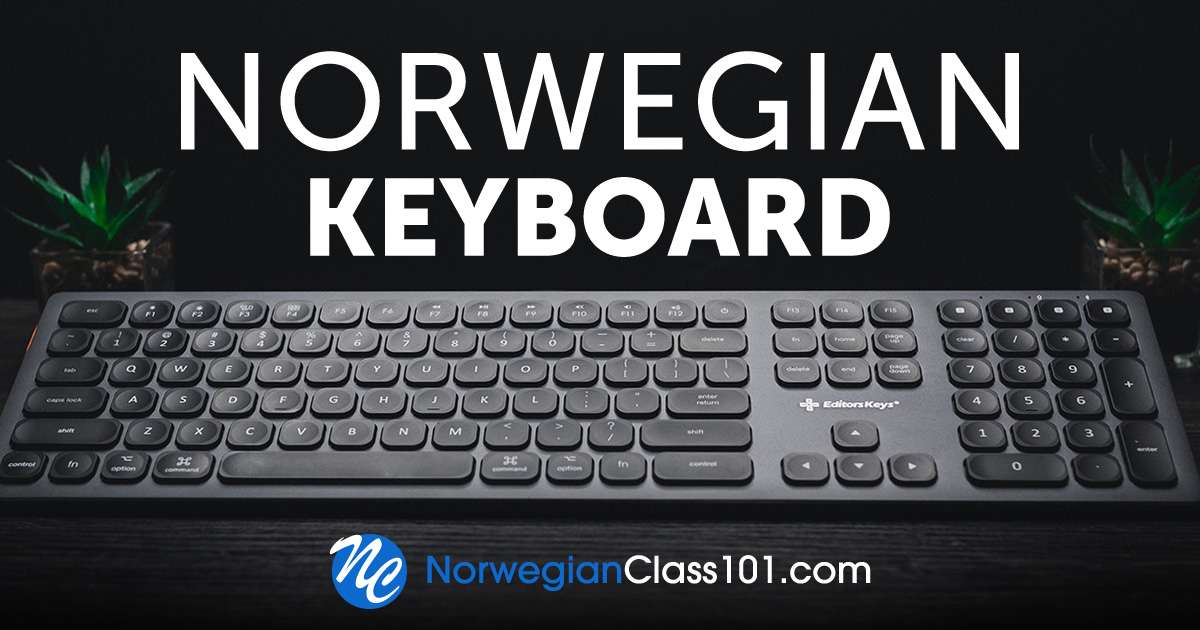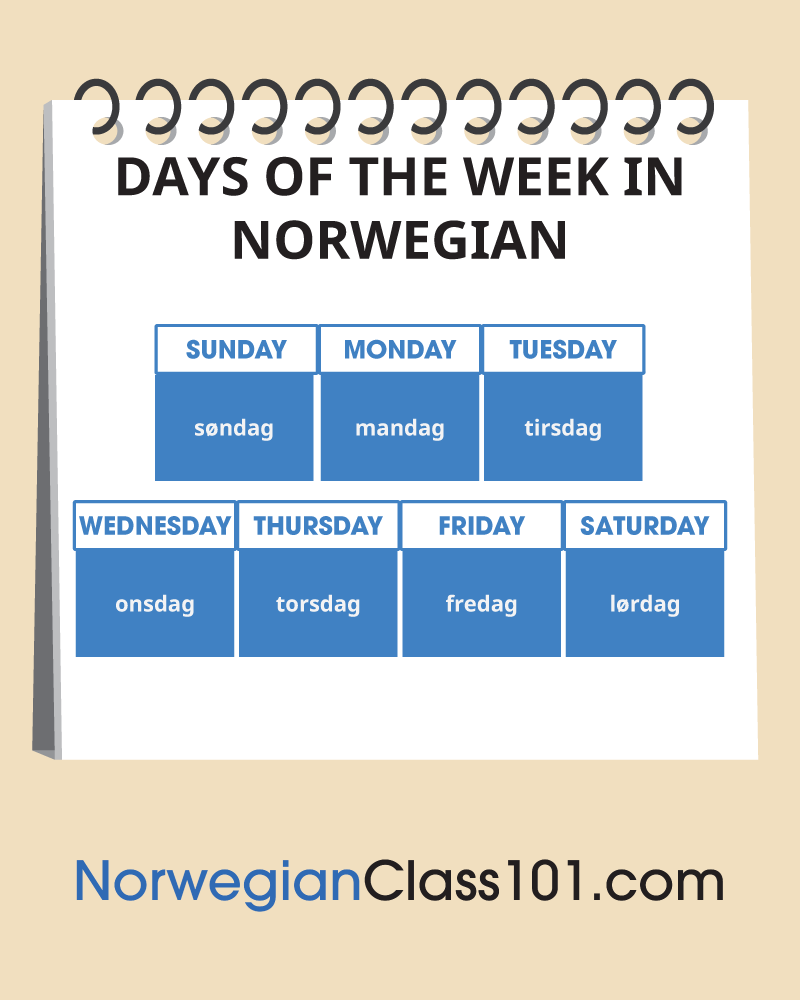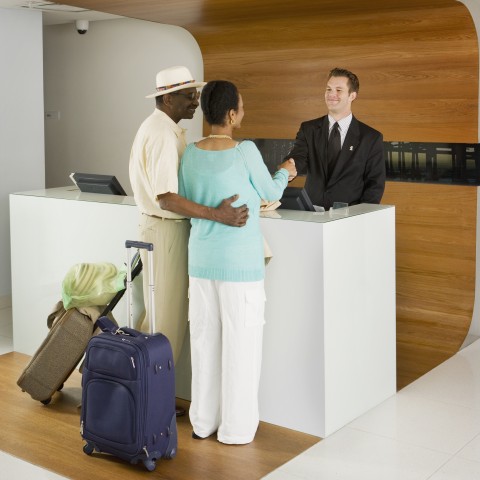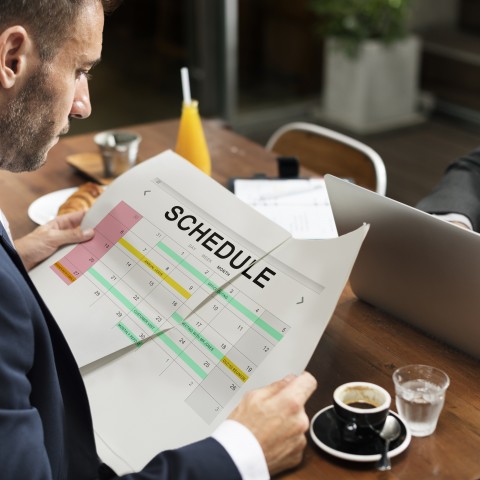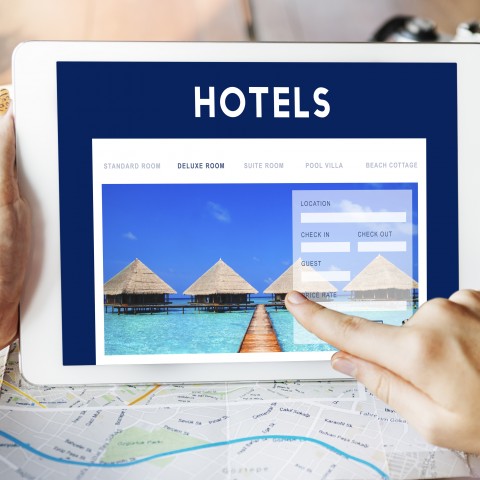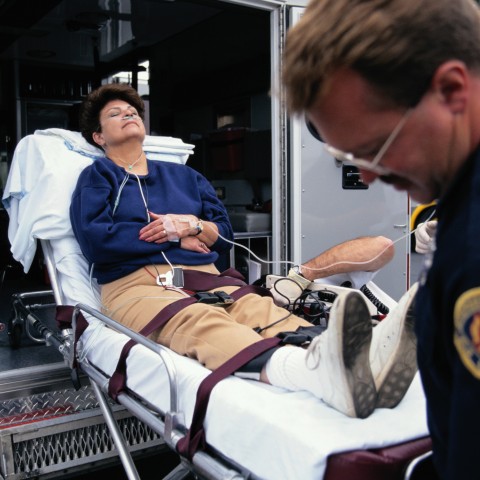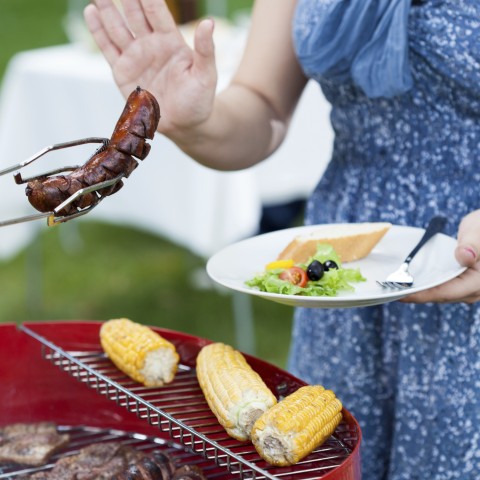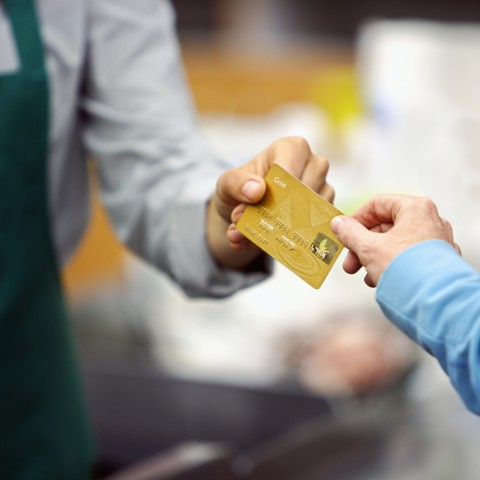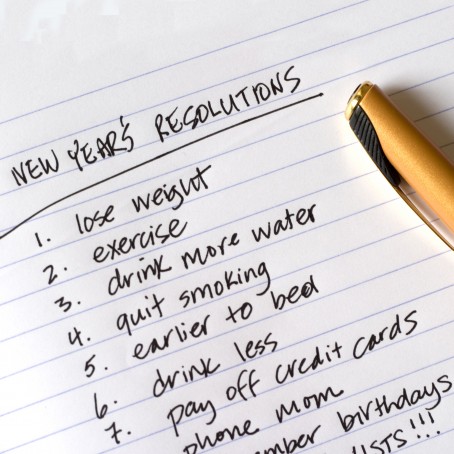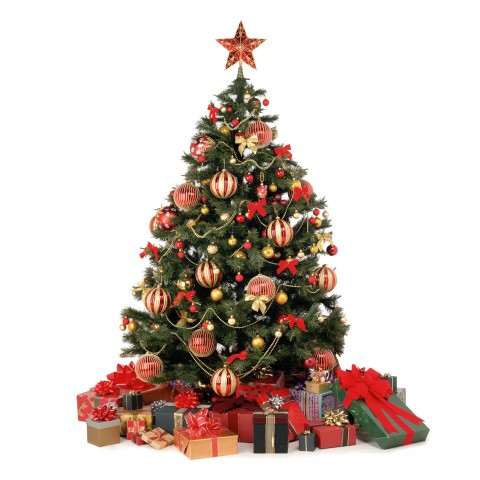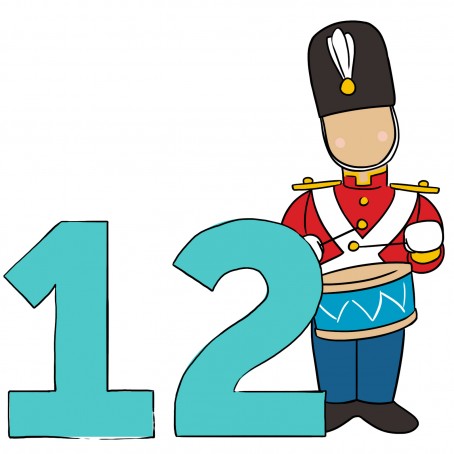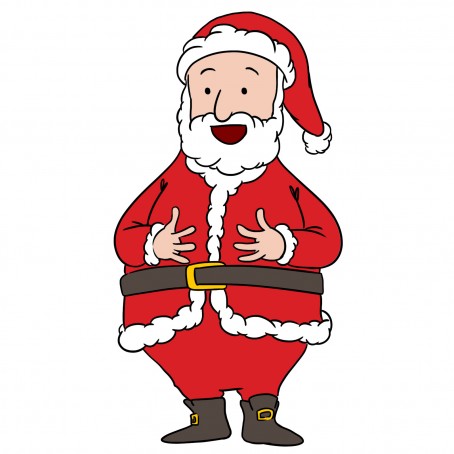
Being able to tell time is an important part of learning a new language. It helps you both when conversing with others as well as when planning events, meetings, or other activities. On top of this, it also gives you a great opportunity to use your prior knowledge of numbers and simple sentence structure.
Are you often late? If you are, make sure you’re on time in Norway! Being on time in Norwegian culture is important. Arriving late is considered rude, and in Norway, it’s important to respect each other’s time. If you arrive late, without notice, it will seem like you don’t respect them or their time.
Keep in mind that if a specific time isn’t set, for example “around eight,” Norwegians generally don’t care when you arrive. That is, if you arrive within one or two hours after.

Norway uses the time zone GMT +2 in the summer, and GMT +1 in the winter. “Daylight Saving Time” is called Sommertid, meaning “Summertime.” Sommertid starts in March and ends in October.
In Norway, the twenty-four-hour clock, also called military time, is used. If someone uses the 12-hour clock, they don’t say “A.M.” or “P.M.” – instead, Norwegians know what time someone’s referring to based on the time of day. If this isn’t clear, it’s normal to ask På kvelden eller morgenen? meaning “At night or morning?” This can be confusing at first, but luckily it means that you can use the same phrases for both day and night!
To learn how to tell the time in Norwegian, the only prior knowledge you should have is how to count from 1-60. However, you could get away with only knowing the numbers 1-12. Even if you’ve just started learning Norwegian, or are brushing up on some knowledge, this is a very simple system and you should learn it in no time using this article!
 Table of Contents
Table of Contents
- What Time is it?
- Hour and O’Clock
- Minutes
- Hours Divided into Minutes
- General Time Reference of the Day
- Time Adverbs
- Time Proverbs and Sayings
- How NorwegianClass101 Can Help You Learn Even More Norwegian!
1. What Time is it?

Before you can tell time in Norwegian, you need to know how to ask about time and how to recognize when you’re being asked about time in Norwegian. Norwegian has two ways of asking for the time and they both mean the same thing. There’s no formal way of asking this question; they’re both polite.
Hva er klokka? “What time is it?”
Hvor mye er klokka? “What time is it?”
Hva er klokka? literally means “What is the clock?” and Hvor mye er klokka? means “How much is the clock?” This might seem a little strange in English, but as shown above, they both mean “What time is it?”
Please keep in mind that klokka can also be pronounced or written as klokken. Which one is used depends on if the person has a dialect or not.
1 – Do you have the time please?
Here’s a very similar way of asking for the time in Norwegian. The only difference is that the word unnskyld, meaning “excuse me” and/or “sorry” is placed in front of the question to make it more polite.
Unnskyld, hvor mye er klokka? “Excuse me, what time is it?”
Unnskyld, vet du hvor mye klokka er? “Excuse me, do you know what time it is?”

How to Answer
Now that you know how to ask for the time in Norwegian, let’s take a look at how you can answer. As always, there are many ways of answering this question. We’ll go through the most common ones.
As a rule, you should always use the proper answer when learning Norwegian. As you learn more and become more confident in your Norwegian language skills, you can start using the other phrases to sound more natural.
As mentioned earlier, when asking about the time in Norwegian, you actually ask “What is the clock?” In Norwegian, the word for “time” isn’t used the same way as in English when telling or asking about time. Instead, the word klokka, meaning “clock,” is used.
Let’s have a look at the most proper way of answering:
Q: Hva er klokka? “What time is it?”
A: Klokka er 5. “The time is 5 p.m.”
The above example is also the most common and polite way to answer the question.
There are two other ways of answering when asked about the time in Norwegian. These are shorter, and are commonly used among friends and family. This way of answering is more casual, but it’s still not considered rude. They’re just simply less polite.
Q: Hva er klokka? “What time is it?”
Q: Den er 5. “It’s 5 p.m.”
Q: Hva er klokka? “What time is it?”
Q: 5. “5 p.m.”
2 – What time is the ___?
As mentioned, an important reason for knowing how to tell time in Norwegian and ask for it is for planning. This can be for events, meetings, and other things that are going to happen.
There are two ways to ask when something is in Norwegian. Again, one is a longer version and the other is a shorter version.
Hvilken tid er [møtet]? “What time is the [meeting]?”
This one can seem a little confusing if you’re familiar with the Norwegian adjectives. Hvilken does, in fact, mean “which” in English, but is at times used as “what.” The more you learn about the Norwegian language, the more natural this will become and you’ll know when to use it. But for now, don’t worry about it! Just be aware that it’s used in this setting.
Hvilken tid er møte? is the most polite way of asking. It’s generally used less often than the shorter version below, simply because it’s longer.
Når er [møtet]? “When is the [meeting]?”
See why this is more commonly used? It means the same thing, even if the word “time” isn’t included. It’s more simple to say, and it gets the same message across. Norwegians love their shorter sentences, so this sounds very natural in Norwegian.
In the above examples, the word “meeting” was used as an example. But not everyone is in Norway for meetings. Take a look at the list below to practice for other situations where you might need to know the time.
Hvilken tid er festen? “What time is the party?”
Hvilken tid er timen? “What time is the class?”
Hvilken tid er middagen? “What time is the dinner?”
Hvilken tid er treningen? “What time is the training?”
Hvilken tid er bryllupet? “What time is the wedding?”
Hvilken tid er avreise? “What time is the departure?”

How to Answer
Answering these questions is nearly identical to answering what the time is in Norwegian. The only difference is that you’ll switch out the word klokka with what you’re being asked about.
Q: Hvilken tid er middagen? “What time is the dinner?”
A: Middagen er 5. “The dinner is at 5 p.m.”
Q: Når er møtet? “When is the meeting?”
A: Møtet er 5. “The meeting is at 5 p.m.”
You can alternatively say Møtet er klokken 5, meaning “The meeting is at 5 o’clock,” but this isn’t very common.
As you might already have guessed, the three other ways of answering are actually the exact same as how you would answer when asked what the time is in Norwegian. The only difference is that the pronoun changes depending on what event or situation you’re mentioning.
When answering what the time is, notice how you’re answering with Den, as in Den er 17. When you’re answering when a meeting is, this pronoun will change to Det.
Q: Når er møte? “When is the meeting?”
A: Det er 5. “It’s at 5 p.m.”
Q: Når er festen? “When is the party?”
A: Den er 5. “It’s at 5 p.m.”
As for the last way of answering, this one is the same.
Q: Når er møte? “When is the meeting?”
A: 5. “5 p.m.”
2. Hour and O’Clock

We briefly mentioned this earlier, but it’s important to remember that Norwegians use the twenty-four-hour clock. In the beginning, this can seem confusing, but if you know the numbers, it should be easy to learn!
An important thing to note is that when telling time in Norwegian, “1” is actually written and pronounced ett instead of en.
1 – Hours
Using the twenty-four-hour clock means that Norwegians have two ways of saying the time.
Q: Hva er klokka? “What time is it?”
A1: Klokka er fem. “It’s 5 p.m.”
A2: Klokka er sytten. “It’s 5 p.m.”
Confused? No worries. When someone is telling you the time in Norwegian, you can both get 17 or 5 as an answer if the clock is 5 p.m. Both are right, and which one is used depends on the person answering. We’ll take a look at all the hours so that you can learn this!
In Norwegian, the word “o’clock” isn’t used; however, there is a Norwegian equivalent. This equivalent is hel, which in English means “whole.” Keep in mind that while Norwegians use this word, it’s not used together with a number. When hel is used, it’s used as its own answer. Hel is used when the speaker assumes you know what time it is.
Q: Hva er klokka? “What time is it?”
A: Den er hel. “It’s on the hour.”
Look weird? That’s because it sort of is.
Let’s say you’re hanging out with a friend. You have to leave at 18:30, and the last time you had a look at the clock it was 17:40. After a while, you decide to ask your friend what time it is. He assumes you have knowledge that the clock is around or soon 18:00. He then answers Den er hel, meaning “On the hour.” He doesn’t specify what actual time it is, but is assuming that you know.
This is a very common answer to get in Norwegian.
“Hour” in Norwegian is time. This is used when talking about lengths of time.
Now that you understand some of the basics of how the Norwegian clock system works, let’s go through the hours! The chart below will not only show you what each hour is called, but will also teach you how to write time in Norwegian.
| Norwegian (A.M.) | English (A.M.) | Norwegian (P.M.) | English (P.M.) |
|---|---|---|---|
| 00.00 Midnatt | Midnight | 12.00 Klokka tolv | 12 p.m. |
| 01.00 Klokka ett | 1 a.m. | 13.00 Klokka ett | 1 p.m. |
| 02.00 Klokka to | 2 a.m. | 14.00 Klokka to | 2 p.m. |
| 03.00 Klokka tre | 3 a.m. | 15.00 Klokka tre | 3 p.m. |
| 04.00 Klokka fire | 4 a.m. | 16.00 Klokka fire | 4 p.m. |
| 05.00 Klokka fem | 5 a.m. | 17.00 Klokka fem | 5 p.m. |
| 06.00 Klokka seks | 6 a.m. | 18:00 Klokka seks | 6 p.m. |
| 07.00 Klokka sju | 7 a.m. | 19:00 Klokka sju | 7 p.m. |
| 08.00 Klokka åtte | 8 a.m. | 20.00 Klokka åtte | 8 p.m. |
| 09.00 Klokka ni | 9 a.m. | 21.00 Klokka ni | 9 p.m. |
| 10.00 Klokka ti | 10 a.m. | 22:00 Klokka ti | 10 p.m. |
| 11.00 Klokka elleve | 11 a.m. | 23.00 Klokka elleve | 11 p.m. |
As mentioned earlier, Norwegians often answer the time in two different ways. For example, when the time is 11 p.m., you can choose if you want to say tjuetre (23) or elleve (11). Both are correct and both will be understood. If you want to be clear that something is happening at 11 p.m. and not 11 a.m., you should say tjuetre so that it’s understood that it’s in the evening.
2 – Using hours in a sentence
Now that you know how to say all the hours in the day, let’s put this new knowledge into a sentence!
Jeg har norsktime klokka ni. “I have the Norwegian lesson at 9 a.m./p.m.”
Jeg har norsktime tjueen. “I have the Norwegian lesson at 9 p.m.”

Notice how when saying 21 (tjueen), we omit the word klokka. Also notice that you can say ni for both 9 a.m. and p.m. Usually, the people you talk to will understand whether it’s in the evening or morning based on what the subject is and the current time. However, if you want to be very clear, the safest bet is to say tjueen instead of ni if you’re referring to the evening.
Q: Hva er klokka? “What time is it?”
A: Den er nitten. “It’s 7 p.m.”
Q: Hva er klokka? “What time is it?”
A: Den er syv. “It’s 7 a.m./p.m.”
Q: Hva er klokka? “What time is it?”
A: Nitten. “It’s 7 p.m.”
3. Minutes
So far we’ve only gone through how to tell the time in Norwegian when it’s a round number, or “o’clock.” Now we’ll take a look at minutes and how to add minutes to the hour. With the knowledge you’ve gained so far in this article, this should be easy!
“Minute” and “minutes” in Norwegian are spelled similarly to how they are in English.
Minutt “Minute”
Minutter “Minutes”
Vi drar om ett minutt. “We’re going in one minute.”
Vi drar om to minutter. “We’re going in two minutes.”
Adding -er to minutt makes it plural. This applies to a lot of other words as well, so make a mental note for the future!
When telling time in Norwegian and adding minutes, the minutes are always added first. Normally, the word minutt or minutter isn’t added, but again, this depends on what you or the person you’re talking to prefers. We’ll show you both ways in the examples below. The examples will also have the direct translations so that you can understand how the sentences are structured.
16:23 (4:23 p.m.)
Klokka er sju på halv fem. “The time is seven to half five.”
Klokka er tjuetre over fire. “The time is twenty-three over four.”
16:23 (4:23 p.m.)
Klokka er sju minutter på halv fem. “The time is seven minutes to half five.”
Klokka er tjuetre minutter over fire. “The time is twenty-three minutes over four.”
There are no particular rules for which one to use, as these all mean the same thing: 16:23. However, most people would say Klokka er sju på halv fem, since this is the easiest.
Now let’s take a look at how to say when a time is “five minutes past” and “five minutes over” in Norwegian.
16:25 (4:25 p.m.)
Klokka er fem på halv fem. “The time is five to half five.”
Klokka er fem minutter på halv fem. “The time is five minutes to half five.”
16:35 (4:35 p.m.)
Klokka er fem over halv fem. “The time is five over half five.”
Klokka er fem minutter over halv fem. “The time is five minutes over half five.”
Since this is Norwegian, again, we can make the sentences shorter! This is almost always used when talking with friends and family. Here, we also have some of the assumptions that you, or the one asking, has some knowledge about what time it was earlier since the actual hour isn’t mentioned.
Q: Hva er klokka? “What time is it?”
A: Fem (minutter) over halv. “Five (minutes) past half.”
Q: Hva er klokka? “What time is it?”
A: Fem (minutter) på halv. “Five (minutes) to half.”
1 – Seconds
So what comes after minutes? Seconds. Or in Norwegian: Sekunder!
Sekund “Second”
Sekunder “Seconds”
Gi meg ett sekund! “Give me a second!”
Gi meg to sekunder! “Give me two seconds!”
4. Hours Divided into Minutes
Now that you have knowledge about how the sentences are structured when asking and telling time in Norwegian, we can take a look at how Norwegian works when we’re dividing the hour into minutes.
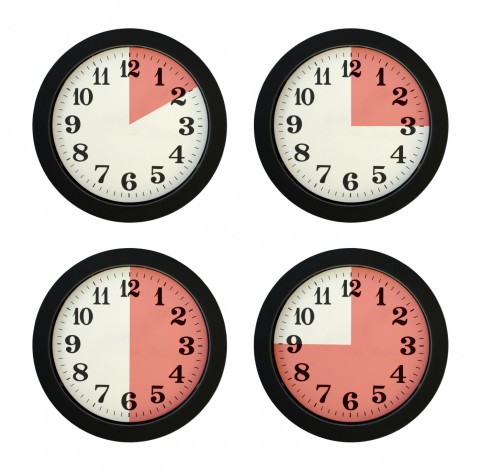
1 – Half
As you might have noticed from the examples above, where the examples were directly translated, Norwegians say “half past” differently than in English. Instead, Norwegians simply say “half” followed by the next hour.
13:30
Klokka er halv to. “The time is half past one.”
This is the correct translation over to English. However, in Norwegian, we’re actually saying “The time is half two.” Below are two examples that are directly translated into English.
14:30
Klokka er halv tre. “The time is half three.”
15:30
Klokka er halv fire. “The time is half four.”
2 – Quarter
Telling time in quarters is the same in Norwegian as in English!
13:45
Klokka er kvart på to. “The time is a quarter to two o’clock.”
13:15
Klokka er kvart over to. “The time is a quarter past two o’clock.”
You can also say Femten minutter over, meaning “Fifteen minutes over” and Femten minutter på, meaning “Fifteen minutes to.” However, Kvart på is used most often.
3 – A third
We already had a look at thirds when talking about minutes. Thirds use the exact same structure as when you’re telling minutes in Norwegian.
14:07
Syv (minutter) over to “Seven (minutes) past two”
13:53
Syv (minutter) på to “Seven (minutes) to two”
Femtitre “Fifty-three (minutes)”
When you’re asking about time and the clock is after XX:30, you can either get the actual number (like 53) or the minutes until “o’clock.” Both are correct and frequently used.
Below are some more examples of how to say different hours so that you can practice and figure out which way you prefer!
13:30
Klokka er halv to. “The time is half past one.”
Halv to “Half past one”
Halv “Half”
13:45
Klokka er kvart på to. “The time is a quarter to two.”
Kvart på to “Quarter to two”
Kvart på “Quarter”
13:40
Klokka er ti over halv to. “The time is twenty past one.”
Ti over halv to “Twenty past one”
Ti over halv “Twenty past”
13:02
Klokka er to over ett. “The time is two past one.”
To over ett “Two past one”
To over “Two past”
13:12
Klokka er tolv over ett. “The time is twelve past one.”
Tolv over ett “Twelve past one”
Tolv over “Twelve past”
13:52
Klokka er åtte på ett. “The time is eight to one.”
Åtte på ett “Eight to one”
Åtte på “Eight (to)”
Klokka er femtito. “The time is fifty-two”
Femtito “Fifty-two”
5. General Time Reference of the Day

As mentioned multiple times before, in Norway p.m. and a.m. aren’t used. It’s assumed that you know what time of day it is, and what time of the day people are referring to. If you’re unsure, it’s very useful to know the words for points of time throughout the day. This way, you can always ask På kvelden eller dagen?, meaning “In the evening or day?”
1 – Words for time reference of the day
Morgen “Morning”
Soloppgang “Sunrise”
Formiddag “Noon”
Dagtid “Daytime”
Tidlig ettermiddag “Early afternoon”
Ettermiddag “Afternoon”
Kveld “Evening”
Solnedgang “Sunset”
Natt “Night”
Midnatt “Midnight”
2 – When time references of the day are used
So, let’s look at what time period is referenced when these words are used. Note that this does depend on the person and is more of a general idea of what to expect.
Morning 05 to 09 (5 a.m. – 9 a.m.)
Noon 09 to 12 (9 a.m. – 12 p.m.)
Daytime 09 to 19 (9 a.m. – 7 p.m.)
Early afternoon 13 to 15 (1 p.m. – 3 p.m.)
Afternoon 15 to 18 (3 p.m. – 6 p.m.)
Evening 18 to 23 (6 p.m. – 11 p.m.)
Night 00 to 04 (12 a.m. – 4 a.m.)
Midnight 00 (Midnight)
No one is going to raise an eyebrow if you say “night” when it’s 05. It’s a running joke to often say the wrong word, for example, God Kveld! meaning “good evening,” when it’s actually afternoon or morning.
6. Time Adverbs
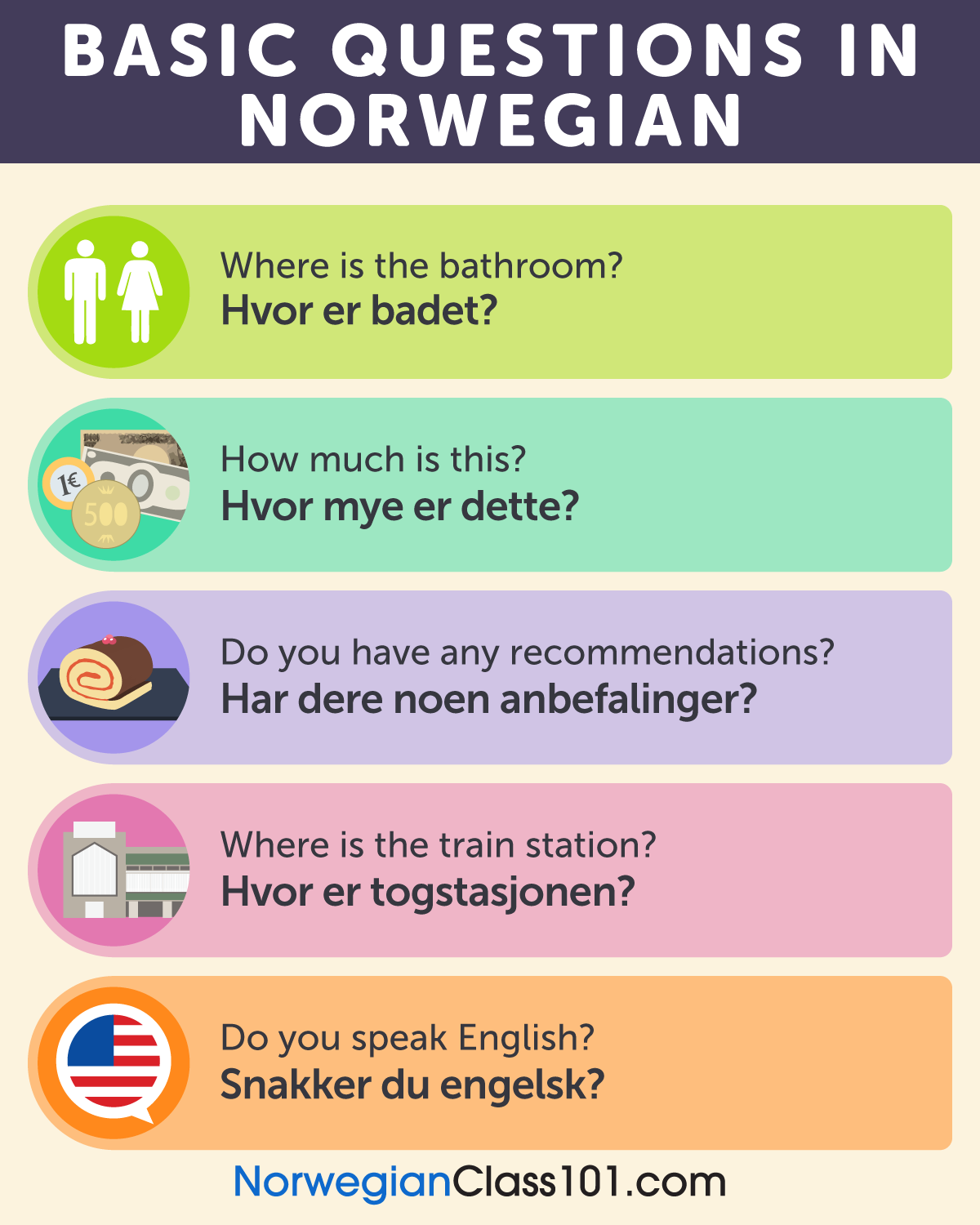
When you’re telling time in Norwegian, and especially when planning something or talking about when something is going to happen, it’s very useful to know time adverbs. This will also make your Norwegian sound a lot more natural.
1 – Adverbs in sentences
| English | Norwegian |
|---|---|
| Right now | Akkurat (nå)/nå Jeg sto akkurat opp. Jeg sto opp akkurat nå. “I just woke up.” “I just woke up right now.” |
| Currently | For tiden Hva jobber du med for tiden? “What are you currently working with?” |
| Meanwhile | I mellomtiden / I mens Jeg venter her i mellomtiden, Jeg venter her imens “I’ll wait here in the meanwhile.” |
| At the same time | Samtidig Vi drar samtidig “We go at the same time.” |
| Before | Før Kom før klokka fem. “Come before five.” |
| After | Etter Kom etter klokka fem. “Come after five.” |
| Soon | Snart Jeg kommer snart. “I’m coming soon.” |
| Almost | Nesten Jeg var nesten til tide. “I was almost on time.” |
| In a little while | Om en liten stund Jeg kommer om en liten stund. “I’ll come in a little while.” |
| For a long time | (På) Lenge Jeg har ikke sett deg på lenge. “I haven’t seen you for a long time.” |
| Anytime | Når som helst Du kan komme når som helst. “You can come anytime.” |
| As soon as possible | Så raskt / Fort som mulig Kan du gi meg pengene tilbake så fort som mulig? “Can you give me the money back as soon as possible?” |
7. Time Proverbs and Sayings
Norwegian has many proverbs and sayings. They’re used quite commonly, but less frequently among younger people. Usually they’re used more as a joke and in a sarcastic way when younger people use them. However, among older people, and especially the elderly, you’ll definitely hear a lot of proverbs and sayings about time.
1 – Common proverbs and sayings
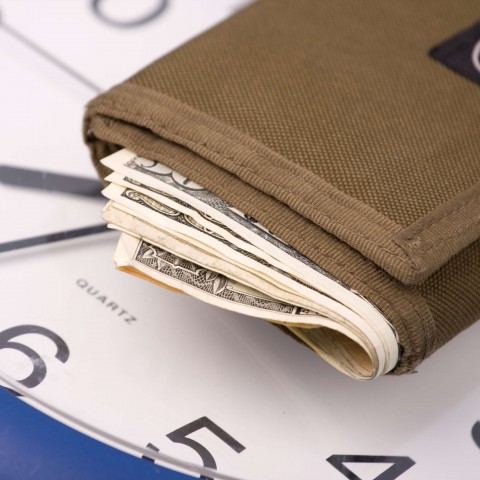
Here are some of the most commonly used proverbs and sayings about time.
Time is money. Tid er penger.
Time flies. Tiden flyr.
An inch of gold will not buy an inch of time. Tid kan ikke kjøpes.
Time heals all wounds. Tiden leger alle sår.
Better late than never. Bedre sent enn aldri.
2 – Sayings in dialects and Bokmål
A lot of Norwegian sayings are in dialect, as Norway has hundreds of different dialects. A longer Norwegian equivalent of “Time flies” is below so you can take a look at both the dialect version and the Bokmål version!
| English | “Time flies, you don’t know where it went, suddenly it’s gone.” |
| Bokmål | Tiden flyr, du vet ikke hvor det blir av den, plutselig er den borte. |
| Dialect | Tida flyr, du veit ikke hvor det blir av han, plutselig er han borte. |
8. How NorwegianClass101 Can Help You Learn Even More Norwegian!
As mentioned many times in this article, there are many different ways of both asking and telling time in Norwegian. Which way you want to ask and tell time is completely up to you. Maybe you want to sound like a natural and casual Norwegian; maybe you want to practice your pronunciation; or maybe you want to use the proper and polite ways of asking and telling time.
Hopefully, this article has given you some ideas on how you want to sound and present yourself when speaking Norwegian.
Telling the time in Norwegian is something that’s very important, especially if you’re living in Norway and want to interact with the Norwegian communities. To both know the current Norwegian time and how to ask for it is a great conversation starter, and very useful when planning events and other activities.
You can also check out NorwegianClass101 if you want to learn more Norwegian. Here, you can find in-depth articles that will help you on your way to learning the Norwegian language. Maybe you need to learn more about numbers to tell time? Then feel free to check out our video on the numeric system in Norwegian. This will help you in many other ways, including telling time in Norwegian.
NorwegianClass101 has articles for both beginners and advanced users, so no matter where you are in your learning curve, you’ll find something that can help you on your way to mastering the Norwegian language.
Before you go, let us know in the comments how you feel about asking about and telling the time in Norwegian! Do you feel more confident now, or are you still struggling with something? To practice, write us a few questions and answers about time in the Norwegian language in the comments. 🙂 We look forward to hearing from you!

The Norwegian Calendar: Talking About Dates in Norwegian
Did you know there are many different types of calendars?
As you probably know – a calendar is a system of organizing days in weeks and months for specific purposes, according to Wikipedia.
Worldwide, most countries use the Gregorian calendar. Some just work on the same framework, meaning that time is divided into units based on the earth’s movement around the sun – the “solar calendar”. Other calendars keep time by observing the moon’s movements, a combination of the moon and the sun’s movements, and seasons.
Through NorwegianClass101, you can learn all about this and so much more! Our themed, culturally relevant lessons are skillfully designed so you can do your planning perfectly for a holiday or a date.
Having a good plan for a visit or a trip is like studying well for an exam. You’re just so much better prepared! For that, you could well need specific phrases to plan around appointments and such, especially on business trips. Make sure to use the charts we provide here with the days of the week in Norwegian, as well as the months in Norwegian to navigate your way as you plan. Great resources!
Also – always remember to have fun!
Table of Contents
- Why Will It Help To Know How To Talk About Dates in Norwegian?
- Talking About your Plans
- Can NorwegianClass101 Help You In Other Ways Too?

1. Why Will It Help To Know How To Talk About Dates in Norwegian?
Well, that’s not a difficult question to answer. No matter why you’re travelling, it would be best to at least know the names of days and months in Norwegian. You don’t want to miss your flight or an appointment because you confused “fredag” (Friday) with “lørdag” (Saturday)! Or maybe you planned a holiday for “juli” (July), but you booked a flight for “juni” (June) by accident!
Avoid this confusion by learning the Norwegian calendar before you leave.
Now, as promised, the 15 phrases to help you make and discuss plans.
2. Talking About your Plans
Perhaps you’re working in Norway, or maybe you’re enjoying a prolonged holiday. Fabulous! Memorize these phrases so you can be sure to successfully negotiate meetings, appointments, dates, events, the list goes on!
1. Hva gjør dere denne helgen?
“What are you doing this weekend?”
This question is usually a preamble to inviting someone somewhere. Given that it’s over the weekend, it probably means a casual get-together or another social event. (But not necessarily! A manager or boss could also ask this for entirely different reasons.)
It’s a handy phrase to know when you’ve made Norwegian or expat friends in the country. Or, be the one doing the inviting. Then train your ear to learn the following phrases so you can understand the response.
2. Jeg skal reise denne helgen.
“I am traveling this weekend.”
This could be a reply if you’re not available because you’re doing other fun stuff.
No matter why you are visiting Norway, do take the time to explore the country! It’s beautiful and it has so many wonderful, interesting spots ready to be visited.
3. Jeg planlegger å bli hjemme.
“I am planning to stay at home.”
Maybe you feel unwell, but don’t want to give too much information? Or maybe you have work to do? Perhaps you just need some quiet gardening time…it doesn’t matter. This response is polite and honest without oversharing.
It could also be a slightly open-ended response, depending on how you deliver it. Because hey, being home could still mean your plans are flexible, right?
That said – depending on your relationship with the inviter, nuances like these will probably not be so apparent in a foreign culture. So, best to use this excuse for declining an invitation only if you are truly set on staying in.
4. Denne uken er jeg opptatt.
“This week I am busy.”
Another polite phrase that gives a reason for declining an invitation but without oversharing details.
Don’t decline too many invitations, though! You don’t want people to think that you’re too busy to hang out with them. They will stop inviting you out, and you know how the saying goes – all work and no play makes Jack a dull boy…! Being social is good for the soul.
5. Jeg er ledig i morgen.
“I am free tomorrow.”
Yay! Perhaps you were approached by that person and they asked about your availability for a date. This would be a fine reply. Not too eager, but still indicating that you’re interested.
Or maybe you’re just replying to a colleague or manager’s request for a meeting. Polite, honest and clear.
Alternatively, you’re just busy right now, and plans are not going the way they were…well, planned. Compromise is a lovely thing! And this phrase sounds just like that.
Use it to indicate that you want to accommodate an invitation or the inviter’s plans, despite your current unavailability. Only if you are really free, of course.
6. Kan vi gjøre dette en annen gang?
“Can we reschedule this?”
So, life happened and you are unable to meet obligations or attend a planned meeting. This is a suitable question to ask if you wish to indicate your willingness to still engage with whatever is on the table.
Obviously you should (ideally) not ask to reschedule a party or big meeting! (Unless you’re the boss or it’s your own party, of course.) But if there’s reasonable wiggle room regarding arrangements, then this one’s your question.
7. Jeg kommer til å ha nok tid på slutten av måneden.
“I will have enough time at the end of the month.”
A go-to phrase when events or activities are likely to take up a lot of your time, such as going away for a weekend, spending the day at a local market, or writing your manager’s quarterly report (with 20 flow-charts in Powerpoint) – anything that won’t only take an hour or two.
8. Når er den beste tiden som passer for deg?
“When is the best time that suits you?”
Remember phrase #5? That was a possible reply to this question. Asked by your crush, very possibly! Or, it could be asked by any other person for any other reason, doesn’t matter.
If this is addressed to you, it usually means that the person respects your time and schedule, which is a good thing. It probably also means that their own schedule is flexible, another good thing.
This is also a polite question to ask when a manager or senior colleague wants to meet with you. Let them decide on the time, and be as accommodating as possible. This attitude shows respect for seniority – good for career building. (Within reason, of course. You don’t need to postpone your wedding or your paid-up holiday to Australia because your manager wants to see you.)
9. Passen denne datoen for deg?
“Is this date OK with you?”
But – if the other party insists that you choose a time for a meeting, appointment, or date etc., then do so! Respond with this nice, somewhat casual question that leaves space for negotiation, but only needs a simple reply.
Suitable for friends, and casual acquaintances and colleagues.
10. Er du tilgjengelig på den dagen?
“Are you available on that day?”
This is the a-bit-more-formal version of the previous question. Again, it has room for negotiation, but only needs a simple response – nice and neat!
Maybe this is the go-to question when you’re addressing your seniors at work, or a person much older than you.
11. Kan vi gjøre det så snart som mulig?
“Can we do it as soon as possible?”
This question has an urgency to it that should preferably be responded to with the same. A simple reply will be good – yes or no. Less negotiable, this is still polite because it’s a question that gives you a choice.
But stand ready with one of the phrases in this article to help tie down a time and date!
12. Jeg er tilgjengelig hver kveld.
“I’m available every evening”
If you’re going to reply with this phrase, context is everything.
– If it’s your manager asking you to put in a bit of overtime, and you are available to – great reply! When deadlines are tight and everybody is stressing, your willingness to go the extra mile can only improve your relationship with your boss.
(Still, no need to be a doormat! If you get asked to work overtime too often, or if everyone else is goofing around while you have to graft, then re-evaluate the situation. And if you feel you’re being exploited a bit, don’t stress! Equip yourself with the diplomatic, yet assertive responses right in this article.)
– If it’s an old friend or longtime significant other asking to hang out – good reply. You know one another and appearances don’t matter any longer.
– If it’s a new crush who just asked when you’d be available for a date – stop. Not such a great reply. Tone down a bit! “Interested but not overly eager” is what you’re going for here.
Refer back to response #5, or use a counter-question, such as #1. Whatever suits you.
But if they – or anyone else – invite you to scale the Himalayas with them, then the next phrase will probably be the only sane response!
13. Jeg må planlegge dette i god tid.
“I need to plan this well in advance.”
So, as said under #9, perhaps you’re invited to join someone conquer the Himalayas.
Or your company manager wants you to plan the Party that Tops All Year-End Parties Forever.
Simply – if you get asked to do something that you know will need a lot of thorough planning, this is a good phrase to respond with.
It’s an assertive phrase that demonstrates two things regarding your attitude:
a) That you know your own abilities, and respect your own schedule.
b) That your respect other people’s time and schedule too.
Then just be sure to actually do that planning well in advance!
14. Vi må finne en annen dato.
“We need to find another date.”
So, you’re in negotiations regarding a date.
This is an assertive statement that should probably not be used with a “My way or the highway” attitude.
That stuff only works in the movies – think sharp-tongued Samuel L. Jackson. Or fierce Kristen Stewart. Yea, they can be scary, so tone down that tone.
Also, be mindful that fickle people who change plans all the time don’t keep friends! Taking others’ needs into consideration, while simultaneously having your way is a delicate art that takes proper cultivation. Use this phrase sparingly – we have better ones here to negotiate with.
Of course, if your planned trip to the dentist falls on the same day as the only Billie Eilish concert close by…well, priorities are priorities. Feel free to call the dentist with this phrase. Or even better, use the next one.
15. Jeg kan ikke gjøre det på den dagen.
“I cannot do it on that day.”
This is the low-key-but-still-firm cousin of the previous phrase. You’re stating a personal fact, and depending on your tone, this can be as non-negotiable as you prefer.
Again, only use this when you really mean it, if you’re visiting Norway or any other foreign country.
So, that’s it, folks! Which phrase did you find the most helpful? Let us know in the comments!
3. Can NorwegianClass101 Help You In Other Ways Too?
Well yes, of course!
We think you will find these phrases easy to use when talking about dates and months in Norwegian. But knowing how to employ them properly could help you avoid sticky situations!
NorwegianClass101 is uniquely geared to help you with this and so much more.
This InnovativeLanguage.com initiative is one of many online language-learning courses. With us, you’ll find it easy and fun to learn a new language, and here are a few reasons why:
- Immediately upon enrollment, you’ll receive hundreds of well-designed lessons to get you going.
- Watch superb recordings of native Norwegian speakers in cool slide-shows – the easy way to practice till you sound just like a native speaker yourself!
- Also immediately upon enrollment, you’ll get access to a huge library of free resources! These include extensive, theme-based Vocabulary Lists and a Word of the Day List (For free, hot bargains!) These alone are sure to give your vocab-learning boxing gloves.
- You’ll also immediately be able to use an excellent and free Norwegian online dictionary. Necessary for quick, handy translations, no matter where you find yourself.
- For the serious learner, there are numerous enrollment upgrades available, one of which offers you a personal, online Norwegian host. Allow us to hold your hand and support you in your learning!
If you’re serious about mastering Norwegian easily yet correctly, NorwegianClass101 is definitely one of, if not the best, online language learning platforms available. Talking about your plans or dates in Norwegian need not ever spoil your stay.
So, hurry up—enroll today!
NorwegianClass101’s Essential Norwegian Travel Phrase Guide
Traveling to foreign countries is nearly always an exciting, enriching, and beneficial experience. Yet, some things can be real downers, such as boredom on a lengthy flight to Norway. Really, binge-watching onboard movies can only be interesting for so long! And jet lag – another huge downer. Did you know that jet lag is more severe when you travel from the West to the East?
Well, we won’t know how to beat that, but there are fortunately plenty of remedies around to investigate.
To beat flight boredom, though, we may have the answer for you at NorwegianClass101! Why don’t you take the time to study Norwegian travel phrases? We make this super easy and fun, with great downloadables, like our PDF Cheat Sheets. Quickly memorize these, and impress your Norwegian friends or travel guide with your flawless Norwegian!
Table of Contents
- Importance Of Learning Travel Phrases
- 13 Must-Have Travel Phrases and Words
- Good-To-Have Travel Phrases
- Ways To Improve Communication in a Foreign Country
- NorwegianClass101 Can Help You Master Travel Phrases Easily and Effortlessly!

1. Importance Of Learning Travel Phrases
Impressing Norwegian people or your travel partners will be the least of the benefits you reap from learning these helpful phrases. These are greater ones:
1) Eliminate Travel Frustration: First of all, you’ll be able to cut out a good chunk of travel frustration and inconvenience due to language barriers.
Know how to pronounce and use at least the basic Norwegian phrases, and then just look foreign. This should go a long way to help you get by and win you friends, because locals would be more inclined to help someone who took the trouble to learn a smidgen of their language.
2) Emergency Readiness: In case of an emergency, you will be able to get help a lot quicker if you know how to ask for what in Norwegian. Imagine miming to a doctor or nurse that you have a sore ear but that you’re allergic to penicillin. Not so easy, right?
Rather, you should know basic emergency travel phrases, especially if you suffer from a serious condition. Also, information about life-threatening allergies you have should always be on your person in the language of the country you’re visiting.
3) Sight-Seeing Readiness: Hopefully, you also travel to learn more about a country’s culture. Visiting the main tourist sites in Norway will be more interesting if you know how to ask pertinent questions in Norwegian.
In this blog, we’ll also be giving you important travel phrases to consider – from the 13 essential must-have phrases to ones that are just generally useful and good to know.
Let’s get cracking!
2. 13 Must-Have Travel Phrases and Words
Seasoned explorers of multiple countries will tell you that certain words and phrases are absolute must-knows in anyone’s travel vocabulary. Learning from them, we collated some of the most essential ones here for you.
If you know these travel phrases and words by heart in Norwegian, you will be much better equipped for your visit than most of your movie-binging travel mates.
1) Takk (Thank you)
As a tourist, you will be relying on the kindness of strangers to get by. Repay them with a small acknowledgment of their friendly generosity – know how to say “thank you” in Norwegian.
2) Snakker du engelsk? (Do you speak English?)
While it may be a bit of a cop-out, sometimes you just can’t figure out how to communicate. Maybe you’re blanking on one specific word you need, maybe they’re speaking with a heavy accent, or maybe it’s just really late and you really want to get to the hotel. In that case, try asking if they speak English, and hopefully you can make things a little bit simpler for yourself.
Don’t abuse this phrase, though! If you just try to get by without learning any of the local language, not only will you not learn anything – you’ll be out of luck if they can’t speak English!
3) Går det en buss fra flyplassen til byen? (Is there a bus from the airport to the city?)
Public transit is usually cheaper, if slower, than taking a taxi or rideshare. Use this phrase to see if you can get where you’re going when you’re strapped for cash, or just when you’d like to take the scenic route into town!
4) Er dette riktig buss til flyplassen? (Is this the right bus for the airport?)
Likewise, if you’re the kind of person who can get themselves moving early (or maybe you just have a late flight), maybe you want to take the bus to the airport rather than taking a cab. If that’s the case, you’ll want to be sure you’re actually heading the right way! You wouldn’t want to end up at a lookout point half an hour away, watching your flight take off in the distance, would you?
5) Unnskyld meg, hva er billettprisen? (Excuse me, what’s the fare?)
If you are paying for a cab, you’ll want to know how much. Most legal taxis will have meters, but when dealing with a currency you’re not familiar with, it can be worth asking just to double check that you’re paying the right amount – especially if the currency has cents.
6) Jeg har en reservasjon (I have a reservation)
This one you can expect to use at least a few times throughout your trip, unless you’re the kind of person who travels by the seat of their pants and just goes to whatever hotel, motel, or hostel has rooms available.
7) Har dere noen ledige rom i kveld? (Do you have any vacancies tonight?)
If that’s the case, you’ll definitely be using this phrase instead. Quite possibly a lot, depending on how lucky you are!
8 ) Hvor er togstasjonen? (Where is the train station?)
If you’re in a country with an expansive commuter rail system (or maybe just a fan of other types of locomotives), you may want to know where the closest station is. Just don’t go looking for pennies on the rails!
9) Jeg er allergisk mot peanøtter (I am allergic to peanuts)
Replace “peanuts” with whatever the word for your allergen may be. If your allergy is serious, you probably already know the importance of stating this very clearly in Norwegian.
If the condition is life-threatening, be sure to have a letter or prescription from a medical professional in Norwegian on your person at all times. Consider getting a medical alert bracelet specially made in Norwegian if your stay will be longer than a month or so.
10) Har du noen vegetarretter? (Do you have any vegetarian dishes?)
If you dislike eating certain things, or you have certain dietary restrictions, it would be best if you knew how to convey this clearly in Norwegian.
Remember, though, that saying “I’m vegan” or “I’m diabetic” may not be enough to get you what you want. The rules for veganism and vegetarianism are not standard everywhere in the world. Also, your patron might not understand what “diabetic” means. If you have a medical condition, it would be best to research some in-depth vocabulary beforehand.
11) Kunne jeg fått et kart? (Could I get a map?)
Planning on exploring your destination? Hopelessly lost? Maybe just an amateur cartographer? No matter the reason, this phrase is sure to come in handy. That said, you’re more likely to get use out of it at some sort of tourist or travel center than you are asking a random passerby on the street.
12) Hvor mye er dette? (How much is this?)
Even if you’re not a big shopper, you’re probably going to need this phrase at some point. Knowing how to count in Norwegian will, of course, help a lot with purchases too.
13) Tar dere kredittkort? (Do you take credit card?)
This is another travel phrase that will smooth your monetary transactions considerably.
3. Good-To-Have Travel Phrases
Unlike the previous phrases, these are not really essential so much as they are useful. Yet, knowing these will still smooth over some bumps on your journey, more than just knowing the crucial phrases would.
1) Er Wi-Fi gratis? (Is the Wi-Fi free?)
If you’re abroad, your normal cellular plans probably won’t have any service, and you’ll be totally reliant on publically available Wi-Fi while you’re out and about. Just ask a server, clerk, or attendant, and they’ll be happy to let you know. Just make sure you’re paying attention when they tell you the password!
2) Kan du vær så snill å ta et bilde av meg? (Could you take a picture of me please?)
What would a trip be with no photos to commemorate the event? Just be sure to ask this of someone who actually looks like they’d be willing to, unless you’re willing to risk being given the cold shoulder or worse. If you’re at a tourist attraction, you’ll find that most people are more than happy to take one for you, so long as you take one of them as well!
3) Har dere noen anbefalinger? (Do you have any recommendations?)
Eating alone in a restaurant? Or going out with new Norwegian friends or business colleagues? Let them help you decide what to have.
4) Jeg vil gjerne ha et røykfritt sete, takk (I’d like to have a non-smoking seat, please)
Though smoking has gone out of fashion in some places, it’s still popular in others. In the event you’re at a restaurant where smoking is allowed on premises, you can always ask this question to the staff and be seated elsewhere.
5) Vann, er du snill (Water, please)
If you’ve emptied your glass, or are cutting yourself off after a few drinks, you can always ask for some water. It can be especially useful if the restaurant is busy to the point you need to call out to someone to get service.
6) Kan jeg få regningen? (Could I have the check?)
To finish off the restaurant related phrases, if you’re eating with friends or really want to impress your colleagues, taking the bill can be a nice treat for them. Of course, this phrase could come in handy as well if you’re eating alone and you’re just impatient to leave.
7) Hva anbefaler du for en suvenir? (What do you recommend for a souvenir?)
Now that your trip is over, what better way to cap it all off than a memento, or maybe a gift for friends and family at home? It’ll be nicer to have something recommended by the locals than a cheap bauble from the airport store, so go ahead and ask someone you’ve met what they think.
4. Ways To Improve Communication in a Foreign Country
When traveling, it’s possible to keep communication smooth when you don’t share a language.
Do so by keeping these five tips in mind. They are aimed to help you communicate with those who cannot speak English very well, and also to keep your traveling experience pleasant!
1. Keep your English simple and easy to understand.
If the person you are talking to speaks very little English, use basic verbs, adjectives, and nouns, and keep sentences short.
However, don’t patronize them by talking in pidgin or like you would address a child. Keep your speech simple but natural, and use the correct grammar.
For instance, don’t say: “You come when?”. If you say: “When will you come?”, you will very likely be understood, and may even help someone who wants to improve their English.
2. Ask someone to write information down.
Apply Rule 1 first at your hotel, where the staff is very likely to be able to speak some English. Get them to write down, in their native language, things like: “I would like to go to the airport, please,” “Please take me to the beach,” or “Where is the closest bathroom?”
These written questions are something you can then give to taxi drivers or any other people who are willing and able to help you. This simple step could make your life a lot easier when you travel to a foreign country!
3. Avoid asking leading questions!
If you want the correct information from a non-native English speaker, that is.
When you need directions, for instance, don’t ask: “To get to the bus stop, do I need to turn left here?” If the person didn’t really understand you, you will probably just get a smile and a “Yes,” which could possibly make you miss your bus.
Rather, you should ask: “Where is the bus stop?” If they understand you, you will get the correct directions.
4. Pick the right person to ask for help.
Time to look at people and think a bit about their appearance! A younger person who looks like they might be a student is more likely to have English skills than the friendly but ancient lady smiling at you from a fruit stall.
If you don’t see anyone like that, head into town to the nearest bank, hospital, pharmacy, or hotel. The staff at those places usually speak a bit of English.
5. Know when to quit.
If you stuck to the above rules, but the person you are talking to only stares at you blankly, say thank you and leave. Hanging around hoping someone will suddenly understand and respond is just wasting your time, and may irritate them as well. Go find someone else.
5. NorwegianClass101 Can Help You Master Travel Phrases Easily and Effortlessly!
So, reader, have you found this article helpful?
Do you feel comfortable enough to use some essential travel phrases in Norwegian? We’d also love to hear if you think we left out important travel phrases. Leave your suggestions and opinions in the comments!
NorwegianClass101 takes the lead with many free learning tools to help you master Norwegian reading and speaking easily, and in fun ways.
These tools include:
– An extensive vocabulary list, regularly updated
– A new Norwegian word to learn every day
– Quick access to the Norwegian Key Phrase List
– A free Norwegian online dictionary
– The excellent 100 Core Norwegian Word List
– An almost limitless Lesson Library for learners of all levels
You will also have access to topic-specific recordings like our Before You Travel: Survival Phrases lesson.
Learn even more efficiently with the help of a personal tutor, after taking an assessment test to personalize and tailor your training.
Getting a tutor is also a good option if you meet challenges in your learning, or need to fast-track correct pronunciation and diction. Your very own friendly, Norwegian-speaking teacher will be only a text away on a special app, anywhere, anytime – an excellent option for business persons!
Using a guided learning system that was developed by experts in language and online education, you’ll receive personal feedback and constant support to improve in no time. You’ll also be tasked with weekly assignments in reading, writing, and speaking to hone your Norwegian speaking skills.
Imagine how impressed your Norwegian friends or colleagues will be when you display your excellent conversational skills! With NorwegianClass101, getting there will be easy and fun.

How to Say Happy New Year in Norwegian & New Year Wishes
Learn all the Norwegian New Year wishes online, in your own time, on any device! Join NorwegianClass101 for a special Norwegian New Year celebration!
Can you relate to the year passing something like this: “January, February, March – December!”? Many people do! Quantum physics teaches us that time is relative, and few experiences illustrate this principle as perfectly as when we reach the end of a year. To most of us, it feels like the old one has passed in the blink of an eye, while the new year lies ahead like a very long journey! However, New Year is also a time to celebrate beginnings, and to say goodbye to what has passed. This is true in every culture, no matter when New Year is celebrated.
So, how do you say Happy New Year in Norwegian? Let a native teach you! At NorwegianClass101, you will learn how to correctly greet your friends over New Year, and wish them well with these Norwegian New Year wishes!

Table of Contents
- How to Celebrate New Year in Norway
- Must-Know Norwegian Words & Phrases for the New Year!
- Top 10 New Year’s Resolutions in Norwegian
- Inspirational New Year Quotes
- Inspirational Language Learning Quotes
- How To Say Happy New Year in 31 Languages
- How NorwegianClass101 Can Help You Learn Norwegian
But let’s start with some vocabulary for Norwegian New Year celebrations, very handy for conversations.
1. How to Celebrate New Year in Norway
Like many other western countries, Norway celebrates the new year on New Year’s Day, December 31. Norwegian people typically gather with friends and eat good food, drink sparkling wine or champagne, and have a party, which is fest in Norwegian, all night long. In this lesson you’ll learn how Norwegians celebrate New Year’s.
Now, before we get into more detail, do you know the answer to this question –
Do you know what type of accident is most common on New Year’s Eve?
If you don’t already know, you’ll find out a bit later. Keep reading.
In Norway, people celebrate New Year’s among friends. The party normally takes place in someone’s home, and everyone participates in the cooking, which in Norwegian is matlaging. Each person normally brings at least one dish: either a side dish, main course, or a dessert. The most common thing to eat for dinner on New Year’s Eve is reindeer, or reinsdyr, but turkey and moose steak are also popular choices. There are lots of toasts, which in Norwegian is skål, throughout the night, and sometimes a “thank you” speech is given summarizing the events of the year.
Another important speech held on New Year’s Eve is the King’s Speech. At 7:30 pm, most Norwegians turn on their TVs or radios to listen to the King’s speech about the year that was. The King speaks live from the The Royal Palace, broadcasting out to all the Norwegian people. Though some may mistakenly assume this speech to be pompous, this couldn’t be further from the truth. The King’s speeches are typically rather down to earth, which is why they are so special and appreciated by the Norwegian people.
As midnight approaches, people usually go to the nearest park or hilltop to watch the fyrverkeri, or fireworks, that are set off when the clock strikes 12:00. A lot of people bring their own fireworks, as it is legally permitted for anyone to set them off. At 12:00 they are all launched, and the dark night is filled with light. Everyone hugs each other and wishes each other a happy new year, and if you are lucky, you may even get a kiss, or kyss.
Now it’s time to answer our quiz question-
Do you know what type of accident is most common on New Year’s Eve?
The most prevalent accidents on New Year’s Eve are fireworks accidents. Every year, ERs across the country receive patients who have been hit by fireworks in the head or in the eyes. Be sure to watch out for stray fireworks if you’re in Norway on New Year’s Eve!
Happy New Year!
Godt Nyttår!
2. Must-Know Norwegian Words & Phrases for the New Year!
1- Year
år
This is pretty self-explanatory. Most countries follow a Gregorian calendar, which has approximately 365 days in a year, while in some cultures, other year designations are also honored. Therefore, New Year’s day in Norway could fall on a different day than in your country. When do you celebrate New Year?
2- Midnight
midnatt
The point in time when a day ends and a new one starts. Many New Year celebrants prefer to stay awake till midnight, and greet the new annum as it breaks with fanfare and fireworks!
3- New Year’s Day
nyttårsdag
In most countries, the new year is celebrated for one whole day. On the Gregorian calendar, this falls on January 1st. On this day, different cultures engage in festive activities, like parties, parades, big meals with families and many more.
4- Party
fest
A party is most people’s favorite way to end the old year, and charge festively into the new one! We celebrate all we accomplished in the old year, and joyfully anticipate what lies ahead.
5- Dancing
dansing
Usually, when the clock strikes midnight and the New Year officially begins, people break out in dance! It is a jolly way to express a celebratory mood with good expectations for the year ahead. Also, perhaps, that the old year with its problems has finally passed! Dance parties are also a popular way to spend New Year’s Eve in many places.
6- Champagne
sjampanje
Originating in France, champagne is a bubbly, alcoholic drink that is often used to toast something or someone during celebrations.
7- Fireworks
fyrverkeri
These are explosives that cause spectacular effects when ignited. They are popular for announcing the start of the new year with loud noises and colorful displays! In some countries, fireworks are set off to scare away evil spirits. In others, the use of fireworks is forbidden in urban areas due to their harmful effect on pets. Most animals’ hearing is much more sensitive than humans’, so this noisy display can be very frightful and traumatising to them.
8- Countdown
nedtelling
This countdown refers to New Year celebrants counting the seconds, usually backward, till midnight, when New Year starts – a great group activity that doesn’t scare animals, and involves a lot of joyful shouting when the clock strikes midnight!
9- New Year’s Holiday
Nyttårsferie
In many countries, New Year’s Day is a public holiday – to recuperate from the party the previous night, perhaps! Families also like to meet on this day to enjoy a meal and spend time together.
10- Confetti
konfetti
In most Western countries, confetti is traditionally associated with weddings, but often it is used as a party decoration. Some prefer to throw it in the air at the strike of midnight on New Year’s Eve.
11- New Year’s Eve
Nyttårsaften
This is the evening before New Year breaks at midnight! Often, friends and family meet for a party or meal the evening before, sometimes engaging in year-end rituals. How are you planning to give your New Year greetings in 2018?
12- Toast
skål
A toast is a type of group-salutation that involves raising your glass to drink with others in honor of something or someone. A toast to the new year is definitely in order!
13- Resolution
forsett
Those goals or intentions you hope to, but seldom keep in the new year! Many people consider the start of a new year to be the opportune time for making changes or plans. Resolutions are those intentions to change, or the plans. It’s best to keep your resolutions realistic so as not to disappoint yourself!
14- Parade
parade
New Year celebrations are a huge deal in some countries! Parades are held in the streets, often to celebratory music, with colorful costumes and lots of dancing. Parades are like marches, only less formal and way more fun. At NorwegianClass101, you can engage in forums with natives who can tell you what Norwegian New Year celebrations are like!
3. Top 10 New Year’s Resolutions
So, you learned the Norwegian word for ‘resolution’. Fabulous! Resolutions are those goals and intentions that we hope to manifest in the year that lies ahead. The beginning of a new year serves as a good marker in time to formalise these. Some like to do it in writing, others only hold these resolutions in their hearts. Here are our Top 10 New Year’s resolutions at NorwegianClass101 – what are yours?
Learn these phrases and impress your Norwegian friends with your vocabulary.
1- Read more
lese mer
Reading is a fantastic skill that everyone can benefit from. You’re a business person? Apparently, successful business men and women read up to 60 books a year. This probably excludes fiction, so better scan your library or Amazon for the top business reads if you plan to follow in the footsteps of the successful! Otherwise, why not make it your resolution to read more Norwegian in the new year? You will be surprised by how much this will improve your Norwegian language skills!
2- Spend more time with family
tilbringe mer tid med familien
Former US President George Bush’s wife, Barbara Bush, was quoted as having said this: “At the end of your life, you will never regret not having passed one more test, not winning one more verdict, or not closing one more deal. You will regret time not spent with a husband, a friend, a child, a parent.” This is very true! Relationships are often what gives life meaning, so this is a worthy resolution for any year.
3- Lose weight
gå ned i vekt
Hands up, how many of you made this new year’s resolution last year too…?! This is a notoriously difficult goal to keep, as it takes a lot of self discipline not to eat unhealthily. Good luck with this one, and avoid unhealthy fad diets!
4- Save money
spare penger
Another common and difficult resolution! However, no one has ever been sorry when they saved towards reaching a goal. Make it your resolution to save money to upgrade your subscription to NorwegianClass101’s Premium PLUS option in the new year – it will be money well spent!
5- Quit smoking
slutte å røyke
This is a resolution that you should definitely keep, or your body could punish you severely later! Smoking is a harmful habit with many hazardous effects on your health. Do everything in your power to make this resolution come true in the new year, as your health is your most precious asset.
6- Learn something new
lære noe nytt
Science has proven that learning new skills can help keep brain diseases such as dementia and Alzheimer’s at bay! It can even slow down the progression of the disease. So, keep your brain healthy by learning to speak a new language, studying towards a qualification, learning how to sew, or how to play chess – no matter how old you are, the possibilities are infinite!
7- Drink less
drikke mindre alkohol
This is another health resolution that is good to heed any time of the year. Excessive drinking is associated with many diseases, and its effect can be very detrimental to good relationships too. Alcohol is a poison and harmful for the body in large quantities!
8- Exercise regularly
trene regelmessig
This resolution goes hand-in-hand with ‘Lose weight’! An inactive body is an unhealthy and often overweight one, so give this resolution priority in the new year.
9- Eat healthy
spise sunt
If you stick with this resolution, you will lose weight and feel better in general. It is a very worthy goal to have!
10- Study Norwegian with NorwegianClass101
studere norsk med NorwegianClass101.com
Of course! You can only benefit from learning Norwegian, especially with us! Learning how to speak Norwegian can keep your brain healthy, it can widen your circle of friends, and improve your chances to land a dream job anywhere in the world. NorwegianClass101 makes it easy and enjoyable for you to stick to this resolution.
4. Inspirational New Year Quotes
Everyone knows that it is sometimes very hard to stick to resolutions, and not only over New Year. The reasons for this vary from person to person, but all of us need inspiration every now and then! A good way to remain motivated is to keep inspirational quotes near as reminders that it’s up to us to reach our goals.
Click here for quotes that will also work well in a card for a special Norwegian new year greeting!
Make decorative notes of these in Norwegian, and keep them close! Perhaps you could stick them above your bathroom mirror, or on your study’s wall. This way you not only get to read Norwegian incidentally, but also remain inspired to reach your goals! Imagine feeling like giving up on a goal, but reading this quote when you go to the bathroom: “It does not matter how slowly you go, as long as you do not stop.” What a positive affirmation!
5. Inspirational Language Learning Quotes
Still undecided whether you should enroll with NorwegianClass101 to learn a new language? There’s no time like the present to decide! Let the following Language Learning Quotes inspire you with their wisdom.
Click here to read the most inspirational Language Learning Quotes!
As legendary President Nelson Mandela once said: “If you talk to a man in a language he understands, that goes to his head. If you talk to him in his own language, that goes to his heart.” So, learning how to say Happy New Year in Norwegian could well be a way into someone special’s heart for you! Let this year be the one where you to learn how to say Happy New Year, and much more, in Norwegian – it could open many and unexpected doors for you.
6. How To Say Happy New Year in 31 Languages
Here’s a lovely bonus for you! Why stop with Norwegian – learn how to say Happy New Year in 31 other languages too! Watch this video and learn how to pronounce these New Year’s wishes like a native in under two minutes.
7. Why Enrolling with NorwegianClass101 Would Be the Perfect New Year’s Gift to Yourself!
If you are unsure how to celebrate the New Year, why not give yourself a huge gift, and enroll to learn Norwegian! With more than 12 years of experience behind us, we know that NorwegianClass101 would be the perfect fit for you. There are so many reasons for this!
- Custom-tailored Learning Paths: Start learning Norwegian at the level that you are. We have numerous Learning Pathways, and we tailor them just for you based on your goals and interests! What a boon!
- Marked Progress and Fresh Learning Material Every Week: We make new lessons available every week, with an option to track your progress. Topics are culturally appropriate and useful, such as “Learning how to deliver negative answers politely to a business partner.” Our aim is to equip you with Norwegian that makes sense!
- Multiple Learning Tools: Learn in fun, easy ways with resources such 1,000+ video and audio lessons, flashcards, detailed PDF downloads, and mobile apps suitable for multiple devices!
- Fast Track Learning Option: If you’re serious about fast-tracking your learning, Premium Plus would be the perfect way to go! Enjoy perks such as personalised lessons with ongoing guidance from your own, native-speaking teacher, and one-on-one learning on your mobile app! You will not be alone in your learning. Weekly assignments with non-stop feedback, answers and corrections will ensure speedy progress.
- Fun and Easy: Keeping the lessons fun and easy-to-learn is our aim, so you will stay motivated by your progress!

There’s no reason not to go big in 2018 by learning Norwegian with NorwegianClass101. Just imagine how the world can open up for you!
How to Say ‘Merry Christmas’ in Norwegian
Do you know any ways to wish someone a ‘Merry Christmas’ in Norwegian? NorwegianClass101 brings you easy-to-learn translations and the correct pronunciation of Norwegian Christmas phrases!
Christmas is the annual commemorative festival of Christ’s birth in the Western Christian Church. It takes place on December 25th and is usually celebrated with much food and fanfare! However, not all cultures celebrate Christmas. In some countries, Christmas is not even a public holiday! However, many countries have adapted Christmas and its religious meaning to tally with their own beliefs, or simply in acknowledgment of the festival’s importance to other cultures. If you want to impress native Norwegian speakers with culturally-appropriate Christmas phrases and vocabulary, NorwegianClass101 will teach you the most important ways to wish someone a ‘Merry Christmas’ in Norwegian!

Table of Contents
- How to Celebrate Christmas in Norway
- Holiday Greetings and Wishes
- Must-Know Christmas Day Vocabulary
- Twelve Days of Christmas
- Top 10 Christmas Characters
- How NorwegianClass101 Can Help You
1. How to Celebrate Christmas in Norway
Christmas Eve. In Norwegian, it’s called juleaften.
In modern Norway, Christmas is celebrated on Christmas Eve, December 24, but back in the old days, Christmas was celebrated according to the Catholic tradition, and Christmas Day was the most important day. Eventually traditions such as putting up Christmas trees, or juletre, and giving gifts, in Norwegian called gave, came to Norway, and now most people enjoy celebrating Christmas on Christmas Eve.
Now, before we get into more detail, do you know the answer to this question-
Do you know what Norwegians put in the Christmas porridge?
If you don’t already know, you’ll find out a bit later. Keep reading.
The Christmas shows on TV are an important part of Christmas morning in many Norwegian homes. Many Norwegians feel that the Christmas spirit is not complete until they have seen the Czech-German fairytale “Three Nuts for Cinderella”, which in Norwegian is called “Tre nøtter til Askepott”, Disney’s Christmas medley, and the Norwegian fairytale “Reisen til Julestjernen” meaning “Journey to the Christmas Star”.
Early in the evening, the entire family gathers to eat Christmas dinner together. Some families eat meat as their main course, while others choose to eat fish. Pork ribs, or ribbe, and lye fish, or lutefisk, are two big Christmas classics. In addition, there are potatoes and sauerkraut to round out the meal. Small shot glasses are set on the table and are filled with akevitt, which means akvavit, a Norwegian spirit made from potatoes. This Aquavit is said to help with the digestion of the rich Christmas food.
At night, people gather in their living rooms to sing Christmas songs while standing in a circle around the Christmas tree. They’ll usually unwrap the gifts that lie under the Christmas tree, and often the youngest person must read the names on the gifts and give them out.
In homes with young children, Santa Claus, or julenissen, will come to visit in the evening with a bag full of gifts. He will always ask the same question: “Have you been nice this year?” And if the kids reply with “yes”, they will receive a gift.
Now it’s time to answer our quiz question-
Do you know what Norwegians put in the Christmas porridge?
The answer is an almond. The person who gets the almond in his or her bowl wins a prize, which is a marzipan pig called “marsipangris”. Many Norwegians try their hardest to get the almond, and end up eating way too much porridge
2. Holiday Greetings and Wishes for the Holiday Season
1- Merry Christmas!
God jul!
Do you know how to say ‘Merry Christmas’ in Norwegian? Learn here how to pronounce it perfectly! ‘Merry’ means to be joyful, to celebrate and generally be in good spirits. So, with this phrase you are wishing someone a joyful, celebratory remembrance of Christ’s birth!
2- Happy Kwanzaa!
God Kwanzaa!
Surprise your African-American, or West African native friends with this phrase over the Christmas holidays! Kwanzaa is a seven-day, non-religious celebration, starting on Dec 26th each year. It has its roots in African American modern history, and many people celebrate both Kwanzaa and Christmas!
3- Have a happy New Year!
Ha et godt nytt år!
In countries where Christmas is not officially celebrated, but a Gregorian calendar is observed, this would be a friendly festive-season wish over New Year.
4- Happy Hanukkah!
Gledelig Hanukka!
Hanukkah is the beautiful Hebrew festival over November or December each year. It is also called the ‘Festival of Lights’ and is celebrated to commemorate the Jewish freedom of religion.
5- Have a great winter vacation!
Ha en flott juleferie!
This is a good phrase to keep handy if someone doesn’t observe any religious festival over the Christmas holidays! However, this will only be applicable in the Northern hemisphere, where it is winter over Christmas.
6- See you next year!
Sees neste år!
Going away on holiday over Christmas season, or saying goodbye to someone about to leave on vacation? This would be a good way to say goodbye to your friends and family.
7- Warm wishes!
Varme ønsker!
An informal, friendly phrase to write in Norwegian Christmas cards, especially for secular friends who prefer to observe Christmas celebrations without the religious symbolism. It conveys the warmth of friendship and friendly wishes associated with this time of year.
8- Happy holidays!
God ferie!
If you forget how to say ‘Merry Christmas!’ in Norwegian, this is a safe, generic phrase to use instead.
9- Enjoy the holidays!
Nyt ferien!
After saying ‘Merry Christmas’ in Norwegian, this would be a good phrase with which to wish Christmas holiday-goers well! It is also good to use for secular friends who don’t celebrate Christmas but take a holiday at this time of the year.
10- Best wishes for the New Year!
De beste ønsker for det nye året!
This is another way of wishing someone well in the New Year if they observe a Gregorian calendar. New Year’s day would then fall on January 1st.
3. Must-Know Christmas Day Vocabulary
Christmas is associated with many traditions and religious symbols in multiple countries across the world. It originated centuries ago in the West with the birth of Christianity, and the celebrations are often embedded with rich cultural significance. So, by now you know how to say Merry Christmas in Norwegian! Next, learn pertinent vocabulary and phrases pertaining to Christmas, as well as how to pronounce them correctly. At NorwegianClass101, we make sure you sound like a native speaker!
1- Christmas
jul
This is the Norwegian word for ‘Christmas’. Most happy Christmas wishes in Norwegian will include this word!
2- Snow
snø
In most Northern-hemisphere countries, Christmas is synonymous with snow, and for Christmas, the snowman is often dressed as Santa Claus.
3- Snowflake
snøflak
Snowflakes collectively make up snow. A single snowflake is small, white, light like a feather and icy cold! When put under a microscope, the snowflake reveals itself to have the most beautiful, symmetrical patterns. These patterns have become popular Christmas decorations, especially in Western countries.
4- Snowman
snømann
As you guessed – a snowman is only possible to build if it is snowing! What a fun way to spend Christmas day outside.
5- Turkey
kalkun
Roast turkey is the traditional main dish on thousands of lunch tables on Christmas day, mainly in Western countries. What is your favorite Christmas dish?
6- Wreath
krans
Another traditional Western decoration for Christmas, the wreath is an arrangement of flowers, leaves, or stems fastened in a ring. Many families like to hang a Christmas wreath outside on their houses’ front doors.
7- Reindeer
Reinsdyret Rudolf
Reindeer are the animals commonly fabled to pull Santa Claus’ sled across the sky! Western Christmas folklore tells of Father Christmas or Santa Claus doing the rounds with his sled, carrying Christmas presents for children, and dropping them into houses through the chimney. But who is Santa Claus?
8- Santa Claus
julenisse
Santa Claus is a legendary and jolly figure originating in the Western Christian culture. He is known by many names, but is traditionally depicted as a rotund man wearing a red costume with a pointy hat, and sporting a long, snow-white beard!
9- Elf
alv
An elf is a supernatural creature of folklore with pointy ears, a dainty, humanoid body and a capricious nature. Elves are said to help Santa Claus distribute presents to children over Christmas!
10- Rudolph the Red-Nosed Reindeer
Reinsdyret Rudolf
‘Rudolph the Red-Nosed Reindeer’ is a Christmas song based on an American children’s story book with the same name. Rudolph is one of Santa’s reindeer. The song became more famous than the book, and can still be heard playing in many shopping malls over Christmas time across the globe!
11- North Pole
Nordpolen
The cold North Pole is where Santa Claus is reputed to live with his reindeer!
12- Sled
slede
A sled is a non-motorised land vehicle used to travel over snow in countries where it snows a lot, and is usually pulled by animals such as horses, dogs or reindeer. This one obviously refers to Santa’s sled! Another word for sled is sleigh or sledge.
13- Present
gave
Gift or present giving is synonymous with Christmas Eve and the greatest source of joy for children over this festive time! This tradition signifies that Christ’s birth was a gift to mankind, but not all people who hand out presents over Christmas observe the religious meaning.
14- Bell
bjelle
On Christmas Day, or Christmas Eve, many religious celebrants enjoy going to church for a special sermon and Christmas rituals. The start of the sermon is often announced with bells or a bell, if the church has one. For this reason, the sound of ringing bells is often associated with Christmas Day.
15- Chimney
pipe
The chimney is the entrance Santa Claus uses to deliver children’s presents on Christmas Day, according to folklore! Wonder how the chubby man and his elves stay clean…?!
16- Fireplace
peis
In most countries where it snows, Christmas is synonymous with a fire or burning embers in houses’ fireplaces. Families huddle around its warmth while opening Christmas presents. Also, this is where Santa Claus is reputed to pop out after his journey down the chimney!
17- Christmas Day
Juledag
This is the official day of commemorative celebration of Christ’s birth, and falls each year on December 25.
18- Decoration
dekorasjon
Decorations are the colourful trinkets and posters that make their appearance in shops and homes during the Christmas holiday season in many countries! They give the places a celebratory atmosphere in anticipation of the big Christmas celebration. Typical Christmas decorations include colorful photographs and posters, strings of lights, figurines of Santa Claus and the nativity scene, poinsettia flowers, snowflakes and many more.
19- Stocking
strømpe
According to legend, Santa Claus places children’s presents in a red stocking hanging over the fireplace. This has also become a popular decoration, signifying Christmas.
20- Holly
kristtorn
Holly is a shrub native to the UK, and parts of Europe, Africa and Asia. It is characterised by glossy, spiny-toothed leaves, small, whitish flowers, and red berries. Ironically, its significance for Christmas relates to Christ’s crucifixion and suffering rather than his birth. However, the leaves’ distinctive shape and image have become popular Christmas decorations.
21- Gingerbread house
pepperkakehus
According to legend, the gingerbread house synonymous with Christmas is related to Christ’s birth place, Bethlehem. Bethlehem literally means ‘House of Bread’. Over centuries, it has become a popular treat over Christmas time in many non-religious households as well.
22- Candy cane
polkagris
According to folklore, Christmas candy canes made their appearance first in Germany in the 16th century. A choir master gave children the candy canes to suck on in church in order to keep them quiet during the Christmas sermon! Apparently, the candy is shaped like a cane in remembrance of the shepherds who were the first to visit the baby Jesus. Today, like gingerbread houses, they are still a popular sweet over the festive season!
23- Mistletoe
misteltein
Mistletoe is a parasitic plant that grows on certain trees. In the Middle Ages, it was believed that the mistletoe has magical powers, and could protect a household from evil if hung above a door during December. The belief didn’t last but the habit did, and the mistletoe is another popular Christmas decoration!
4. Twelve Days of Christmas
Wow, you’re doing extremely well! You know how to wish someone a Merry Christmas in Norwegian, and you learned pertinent vocabulary too! The Twelve Days of Christmas is not very well known in modern times, so, you’re on your way to becoming an expert in Christmas traditions and rituals. Well done!
The Twelve Days of Christmas, also known as Twelvetide, is a traditional festive period of 12 days dedicated to celebrate the nativity of Christ. Christmas Day is, for many who observe Twelvetide, the first day of this period.
‘The Twelve Days of Christmas’ is also a popular Christmas song about a series of gifts given on each day of Twelvetide. According to experts, these gifts were created as a coded reference to important symbols in the Christian church. Here is a list of those gifts mentioned in the song! Do you recognise them?
5. Top 10 Christmas Characters in American Culture
This is fantastic, you know how to explain almost everything about Christmas in Norwegian! However, do you know the most popular Christmas characters in American culture? Your knowledge will not be complete without this list.
6. NorwegianClass101 Is One Of The Best Online Language Schools Available!
We don’t just say this – we can prove it! Geared to your personal needs and goals, we have several learning paths from which to choose. From Norwegian for Absolute Beginners to Advanced Norwegian, lessons are designed to meet you where you are, and increase your language abilities in fun, easy and interactive lessons! Mastering a new language has never been this easy or enjoyable.
We have over a decade of experience and research behind us, and it shows! With thousands of audio and video lessons, detailed PDF lessons and notes, as well as friendly, knowledgeable hosts, NorwegianClass101 is simply unbeatable when it comes to learning correct Norwegian. Plenty of tools and resources are available when you study with us. New lessons are added every week so material remains fresh and relevant. You also have the option to upgrade and enjoy even more personalised guidance and services. This is a sure way to fast-track your learning!
So, this Christmas, why don’t you give yourself a present and enroll in NorwegianClass101? Or give an enrollment as a present to a loved one. It will be a gift with benefits for a whole lifetime, not just over Christmas!
How To Say ‘Thank you’ in Norwegian
In most cultures, it is custom to express gratitude in some way or another. The dictionary defines gratitude as follows: it is “the quality of being thankful; readiness to show appreciation for and to return kindness”. Giving a sincere, thankful response to someone’s actions or words is often the ‘glue’ that keeps relationships together. This is true in most societies! Doing so in a foreign country also shows your respect and appreciation for the culture. Words have great power – use these ones sincerely and often!
Table of Contents
- 12 Ways to say ‘Thank you’ in Norwegian
- Video Lesson: Learn to Say ‘Thank You’ in 3 Minutes
- Infographic & Audio Lesson: Survival Phrases – Thank You
- Video Lesson: ‘Thank You’ in 31 Languages
- How NorwegianClass101 Can Help You
So, how do you say ‘Thank you’ in Norwegian? You can learn easily! Below, NorwegianClass101 brings you perfect translations and pronunciation as you learn the most common ways Norwegian speakers say ‘Thanks’ in various situations.

1. 12 Ways to say ‘Thank you’ in Norwegian
1- Thank you.
Takk.
The magical words that can bring a smile to any face. For one day, truly mean it whenever you say these words, and see how this lifts your spirit too!
2- That’s very kind of you.
Det er veldig snilt av deg.
This phrase is appropriate when someone clearly goes out of their way to give good service, or to offer you a kindness.
3- Thanks for your kind words!
Takk for dine gode ord!
Someone paid you a compliment and made you feel good? That is kind of him/her, so express your gratitude!
4- Thank you for coming today.
Takk for at du kom i dag.
This welcoming phrase should be part of your arsenal if you’re conducting more formal meetings with Norwegian speakers. If you’re hosting a party, this is also a good phrase when you greet your Norwegian guests!
5- Thank you for your consideration.
Takk for vurderingen.
This is a more formal, almost solemn way to thank someone for their thoughtfulness and sensitivity towards you. It is also suitable to use when a native speaker has to consider something you submit, like a job application, a project or a proposal. You are thanking them, in essence, for time and effort they are about to, or have spent on your submission.
6- Thanks a lot!
Takk så mye!
This means the same as ‘Thank you’, but with energy and enthusiasm added! It means almost the same as ‘thank you so much’ in Norwegian. Use this in an informal setting with your Norwegian friends or teachers.
7- Teachers like you are not easy to find.
Lærere som deg er ikke lett å finne.
Some phrases are compliments, which express gratitude by inference. This is one of them. If you’re particularly impressed with your NorwegianClass101 teacher, this is an excellent phrase to memorize!
8- Thank you for spending time with us.
Takk for at du tilbrakte tid med oss.
Any host at a gathering with Norwegian speakers, such as a meeting or a party, should have this under his/her belt! Use it when you’re saying goodbye or busy closing a meeting. It could also be another lovely way to thank your Norwegian language teacher for her time.
9- Thank you for being patient and helping me improve.
Takk for at du er tålmodig og hjelper meg med å forbedre meg.
This phrase is another sure way to melt any formal or informal Norwegian teacher’s heart! Teaching is not easy, and often a lot of patience is required from the teacher. Thank him/her for it! It’s also a good phrase to use if you work in Norway, and want to thank your trainer or employer. You will go a long way towards making yourself a popular employee – gratitude is the most attractive trait in any person!
10- You’re the best teacher ever!
Du er den beste læreren noensinne!
This is also an enthusiastic way to thank your teacher by means of a compliment. It could just make their day!
11- Thank you for the gift.
Takk for gaven.
This is a good phrase to remember when you’re the lucky recipient of a gift. Show your respect and gratitude with these words.
12- I have learned so much thanks to you.
Jeg har lært så mye takket være deg.
What a wonderful compliment to give a good teacher! It means they have succeeded in their goal, and you’re thankful for it.
2. Video Lesson: Learn to Say ‘Thank You’ in 3 Minutes
Wherever your destination may be, manners are a must! And in this respect, Norway is no different.
In Norwegian, “Thank you,” is Takk. You can emphasize takk by adding mange in front, which literally means, “a lot.” You could say mange takk, which would be equivalent to, “Thanks a lot,” a more polite expression than just takk.
In Norwegian, there are other ways to express one’s gratitude but they are all variations using takk, which is a verb, and adding other expressions like the adverb “thousand,” can make the expression very formal like, “Thank you very much.” There will be occasions where you will really want to show your appreciation and politeness. During occasions such as these you can use the number tusen and repeat it before adding takk. “Thank you very much” in Norwegian is tusen takk. The number tusen “thousand(s),” is used to make the phrase very formal. This is followed by takk, which literally means something like “(A) Thousand(s) of thanks.”
Cultural Insights
Quick Tip 1
By far, tusen takk is the most common way to say “Thank you.” There is no rule for when to use which expression, yet the formal way of saying “Thank you” always ensures that the person is satisfied with your words of gratitude. If you want to express immense gratitude, adding expressions like inmari (“incredibly”), så mye (“so much”), or kjempemye (“terrible much”), between tusen and takk will make for expressing your feelings. Remember, when in doubt, keeping it simple is always your safest bet. You don’t have to worry about formal or informal situations. Takk can be used with just about anyone, anywhere, and anytime. You say takk when the waiter brings your food or drinks, when the clerk in the hotel takes your luggage to your room (of course, throwing in a tip won’t hurt either!), and when somebody welcomes you or congratulates you. No matter his/her profession or age, takk or tusen takk will always be an appropriate response.
Quick Tip 2
Saying mange takk does not necessarily mean “thanks a lot.” If you say it with a slight decline in intonation and a shake of your head, it implies a “no” in a humble manner. This expression is usually used when you have eaten and become full and do not want to be served more food. It can also be used to decline offers from people, like door salesmen. Remember that when saying mange takk as “no thanks,” shaking your head is vital to the expression.
On the run to Norway? Wait! You can’t go without some basic language phrases under your belt! Especially if you’re heading to meet your prospective employer! Either in person or online, knowing how to say ‘Thank you’ in the Norwegian language will only improve their impression of you! NorwegianClass101 saves you time with this short lesson that nevertheless packs a punch. Learn to say ‘Thank you’ in Norwegian in no time!
3. Audio Lesson: Survival Phrases – Thank You
Perhaps you think it’s unimportant that you don’t know what ‘Thank you’ is in Norwegian, or that it’s too difficult a language to learn. Yet, as a traveler or visitor, you will be surprised at how far you can go using a little bit of Norwegian in Norway!
Click Here to Listen to the Free Audio Lesson!
At NorwegianClass101, we offer you a few ways of saying ‘Thank you’ in Norwegian that you have no excuse not knowing, as they’re so simple and easy to learn. The lesson is geared to aid your ‘survival’ in formal and informal situations in Norway, so don’t wait! You will never have to google ‘How do you say thanks in Norwegian’ again…!
4. ‘Thank You’ in 31 Languages
For the global traveler in a hurry, here are 31 ways to say ‘Thank you’! These are the first words you need to learn in any foreign language – it is sure to smooth your way with native speakers by showing your gratitude for services rendered, and your respect for their culture! Learn and know how to correctly say ‘Thank you’ in 31 different languages in this short video.
5. Why would NorwegianClass101 be the perfect choice to learn Norwegian?
However, you need not stop at ‘Thank you’ in Norwegian – why not learn to speak the language?! You have absolutely nothing to lose. Research has shown that learning a new language increases intelligence and combats brain-aging. Also, the ability to communicate with native speakers in their own language is an instant way to make friends and win respect! Or imagine you know how to write ‘Thank you’ to that special Norwegian friend after a date…he/she will be so impressed!
NorwegianClass101 Has Special Lessons, Tools and Resources to Teach You How to Say Thank You and Other Key Phrases
With more than a decade of experience behind us, we have taught thousands of satisfied users to speak foreign languages. How do we do this? First, we take the pain out of learning! At NorwegianClass101, students are assisted as they master vocabulary, pronunciation, and conversation through state-of-the-art and fun online learning methods. A library replete with learning resources allows for you to learn at your own pace and in your own space! Resources include thousands of video and audio recordings, downloadable PDF lessons and plenty of learning apps for your mobile devices. Each month, we add benefits with FREE bonuses and gifts to improve your experience.

We accommodate all levels and types of learners, from Absolute Beginner to Advanced, and NorwegianClass101 is free for anyone to sign up. However, you can choose to fast track your fluency with lesson customization and increased interactive learning and practicing. Upgrade to Premium, or Premium PLUS to enhance your experience and greatly expedite your learning. With this type of assistance, and pleasurable effort on your part, you will speak Norwegian in a very short period of time!
Click Here to Visit NorwegianClass101!
Best of all is that you’re never alone! We believe that practice is the holy grail of learning any new language, and we gear our courses to ensure lots of it. Enroll with us, and you gain immediate access to our lively forum where we meet and greet, and discuss your burning questions. Our certified teachers are friendly and helpful, and you are very likely to practice your first ‘Thanks!’ in Norwegian on him/her, AND mean it! Hurry up, and sign up now – you will thank us for it.







